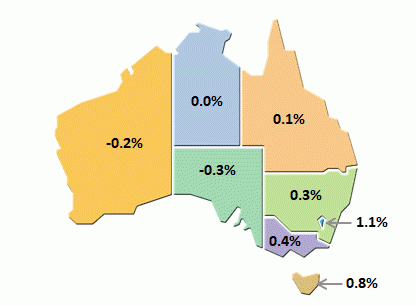September key figures
| Seasonally adjusted, percentage change (a) | ||||||||
|---|---|---|---|---|---|---|---|---|
| Jun 18 to Sep 18 | Sep 18 to Dec 18 | Dec 18 to Mar 19 | Mar 19 to Jun 19 | Jun 19 to Sep 19 | Sep 18 to Sep 19 | |||
| Chain volume GDP and related measures (b) | ||||||||
| GDP | 0.3 | 0.2 | 0.5 | 0.6 | 0.4 | 1.7 | ||
| GDP per capita (c) | -0.1 | -0.2 | 0.1 | 0.3 | - | 0.2 | ||
| Gross value added market sector (d) | -0.3 | -0.1 | 0.6 | 0.5 | 0.2 | 1.2 | ||
| Real net national disposable income | 0.3 | 1.1 | 1.2 | 1.5 | 0.9 | 4.8 | ||
| Productivity | ||||||||
| GDP per hour worked | - | -0.3 | -0.3 | 0.6 | -0.2 | -0.2 | ||
| Real unit labour costs | 0.1 | 0.1 | -0.7 | 0.2 | 0.1 | -0.4 | ||
| Prices | ||||||||
| GDP chain price index (original) | 0.7 | 1.2 | 1.2 | 1.1 | 0.7 | 4.3 | ||
| Terms of trade | 0.8 | 2.5 | 3.3 | 1.4 | 0.4 | 7.8 | ||
| Current price measures | ||||||||
| GDP | 1.1 | 1.2 | 1.6 | 1.5 | 1.1 | 5.5 | ||
| Household saving ratio | 2.8 | 3.1 | 3.4 | 2.7 | 4.8 | na | ||
na not available
a. Change on preceding quarter, except for the last column which shows the change between the current quarter and the corresponding quarter of the previous year. Excludes Household saving ratio.
b. Reference year for chain volume measures and real income measures is 2017-18.
c. Population estimates are as published in the Australian Demographic Statistics (cat. no. 3101.0) and ABS projections.
d. ANZSIC divisions A to N, R and S. See Glossary - Market sector.
Revisions in this issue
The estimates in this issue incorporate the 2017-18 annual supply and use tables. The supply and use tables incorporate revisions reflecting changes in methods, concepts, classifications and data sources. For more information on the role of supply and use tables in the national accounts and the major revisions please see the Analysis of Results section in Australian System of National Accounts, 2018-19 (cat. no. 5204.0).
This publication also includes the impact of re-referencing chain volume (CVM) estimates to the 2017–18 financial year. This in isolation will only affect levels of CVM estimates, generally leaving growth rates unchanged. Re-referencing can have an impact on CVM GDP growth (and other estimates) for the latest financial year (2017–18) if there are significant relative price changes between 2016–17 and 2017–18.
There are also revisions in this issue due to the incorporation of more up-to-date data and concurrent seasonal adjustment.
Changes in this issue
This issue includes the introduction of Mining private business investment and Non-mining private business investment in the accounts. The quarterly and annual series have been included in Table 24. Selected analytical series and Table 34. Key aggregates and analytical series, annual respectively. Methodology for these series can be found in Mining and Non-Mining Investment.
Change to Australia's Economic Territory
A new Maritime Boundary Treaty between Australia and Timor-Leste came into force on 30 August 2019. The new treaty provides exclusive jurisdiction of the former Joint Petroleum Development Area excluding Greater Sunrise in the Timor Sea to the Democratic Republic of Timor-Leste. From this publication onwards, data will reflect the new maritime boundary.
